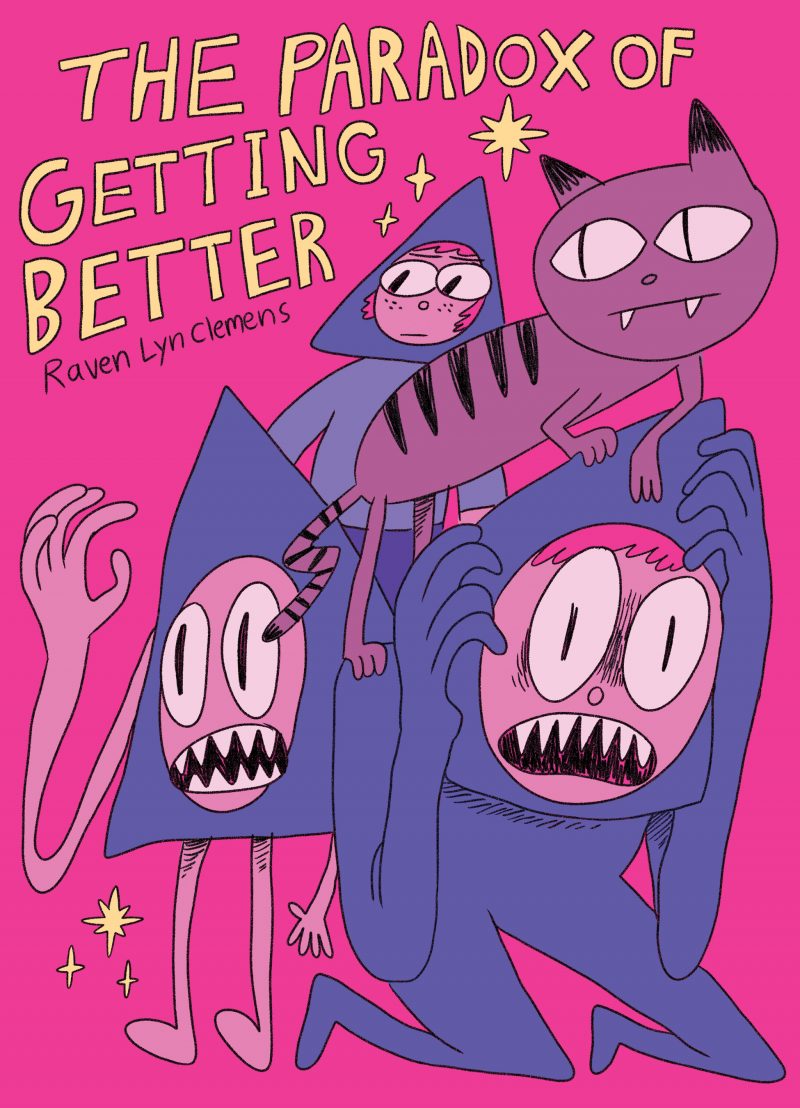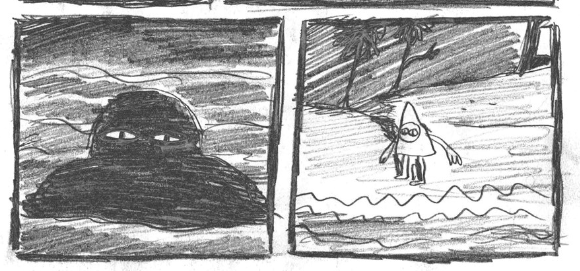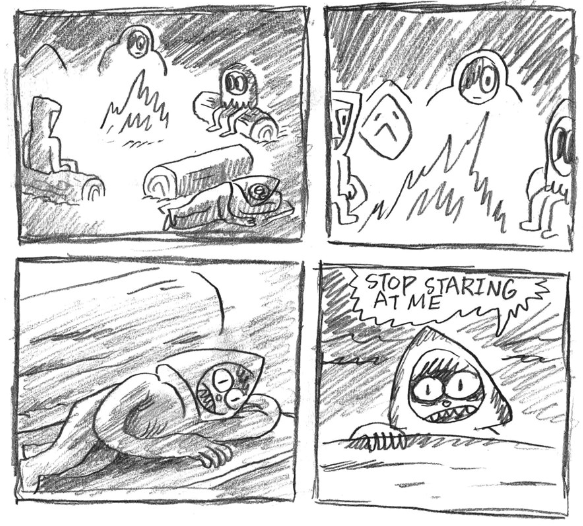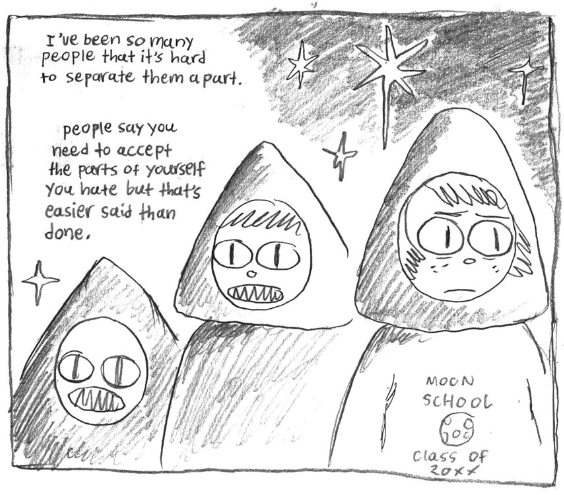
About the book
The Paradox of Getting Better by Raven Lyn Clemens.Genre: Comic, mental health-related autofiction.
Reviewed: May 15, 2025.
My rating
Five stars...!Summary
A metaphorical short comic about a young artist and their struggles with mental illness at different points in their life, as told through three vignettes.My review

I picked this one up because something about the cover intrigued me. I didn't think it would leave much of an impression on me, or even that I would really like it; I rarely truly like comics, even if I do like the style of art they're drawn in. Something about the way they're formatted gives me an impression of disjointedness I have difficult getting over, and I don't read them often, anyway, so I feel like I'm very disconnected from them. I want to read more to fix that, which is what tipped me over into reading this.
I did feel some of that aforementioned disjointedness while reading The Paradox of Getting Better, but I personally found it accompanied the content in a way that came across as intentional. The art is drawn in a very rough pencil sketch style that perfectly matches the tone of the story, too — it gives the whole thing a rough, unfinished feel that lends an almost voyeuristic quality to the story, like you're reading someone's diary. In that same vein, Clemens is skilled at conveying emptiness; the whole world feels like a dream. I particularly enjoyed the strange isolation of the beach from the first part, and how the sky, so ominously black and void, hangs in the background.

Honestly, I did cry while reading this, which was a bit of a shock since I wasn't expecting to at all! The book really knows how to pack an emotional punch, just because of how meditative and sincere it is — I'm not sure if that's an experience everyone would go through reading this, and it could just be that I read this at exactly the right time, but I don't think that's it. This book is unique and wonderful and special and clearly so carefully-crafted, and I know it's going to sit with me for a long while. (Also, I really like how the ending complements the beginning so perfectly; I think that reflects on the cyclical message the final chapter gets at, too.) I hate to be that person, but you really should read this blind and go along with it on the grounds it establishes — I think you'll be surprised.
